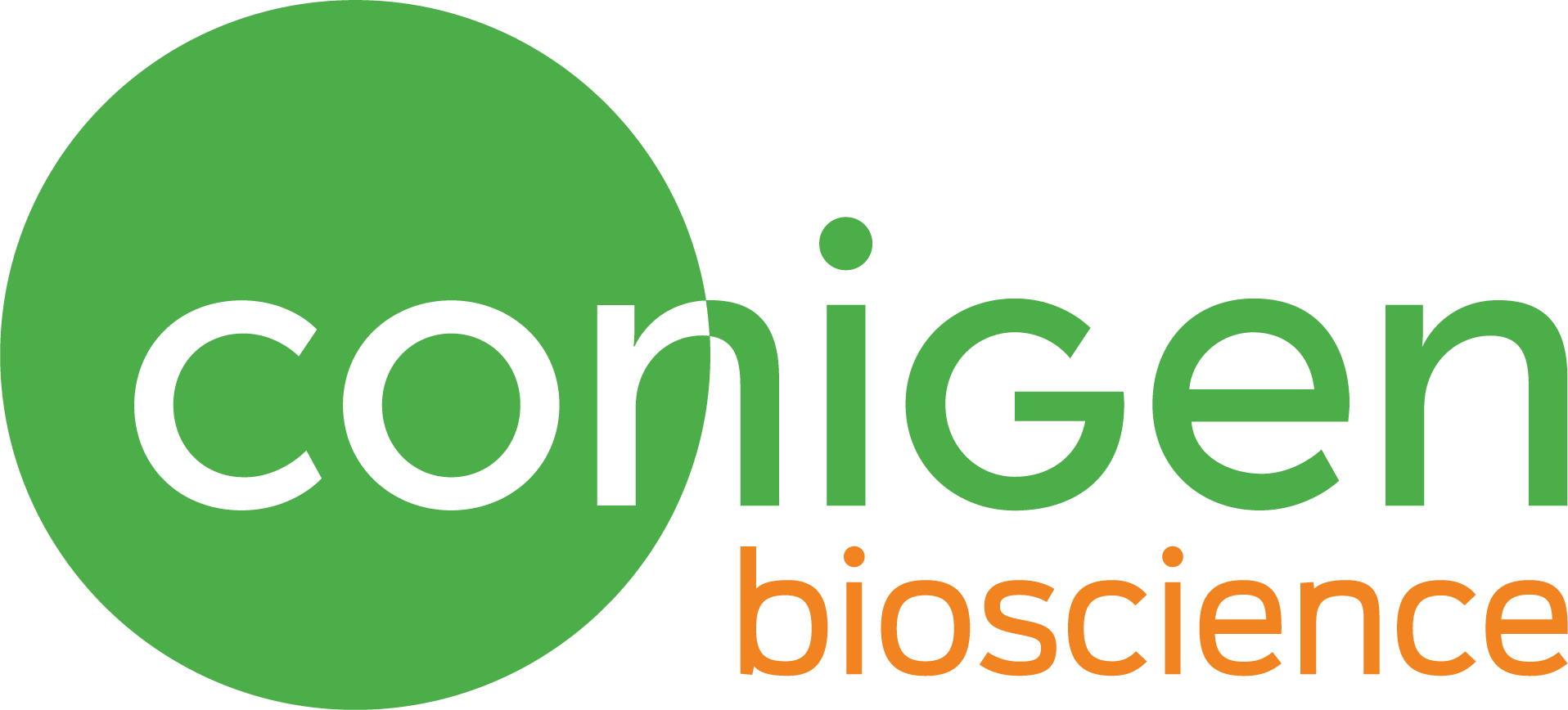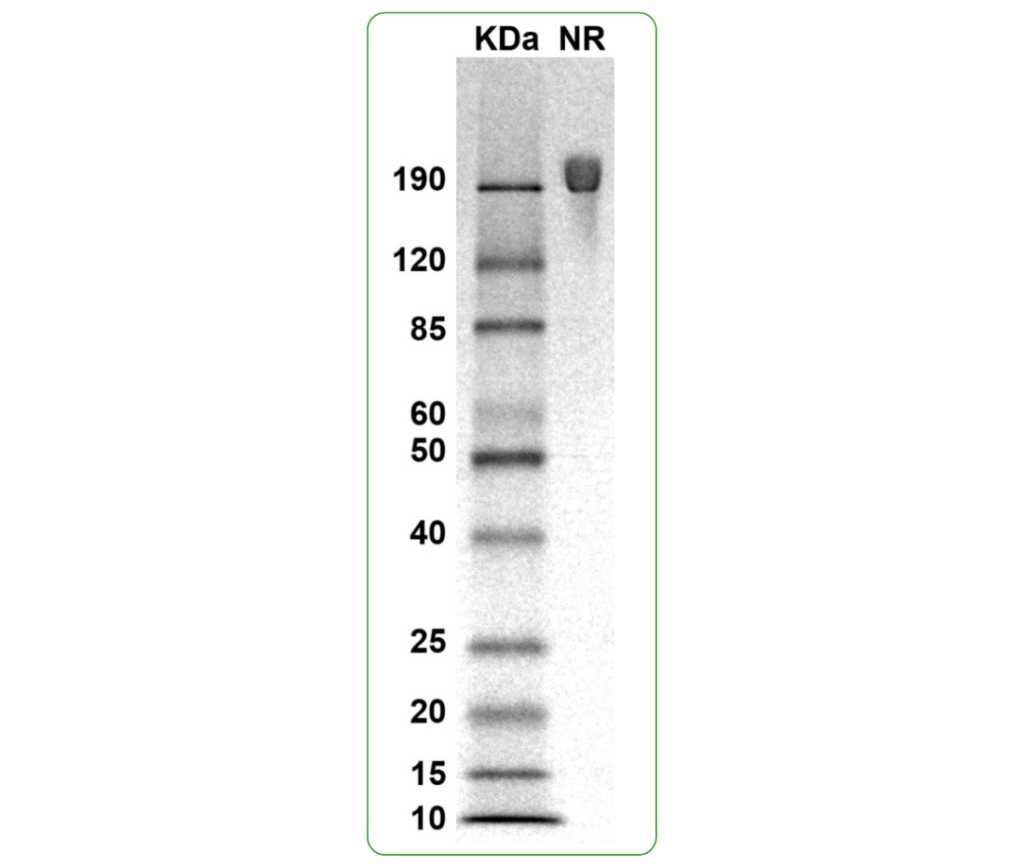Bioactive, Human FGFR2 Dimer, His-Avi Tag
| Product Code | CSP-25130-03 |
| Expression Host | HEK293T |
| Verified Applications | ELISA for FGFR2-specific antibody and BLI for fibroblast growth factor 1 (FGF-1) ligand protein binding assays. |
| Suggested Applications | SPR for FGFR2-specific antibody and FGF-1 protein binding assays. Animal immunization, RUO. |
| Purity | Greater than 90% dimer form as determined by SDS-PAGE under non-reducing condition |
| Amino Acid Range | R22-E377 |
For Research Use Only (RUO)
Price: $125.00
Price: $195.00
Price: $350.00
Price: $750.00
Price: $2,500.00
Bioactivity – Antibody Binding
Immobilized human FGFR2-His-Avi dimer protein (CSP-25130-03) at 2 μg/mL (100 μL/well) can bind anti-human FGFR2 polyclonal antibody with half maximal effective concentration (EC50) range of 2.4-9.7 ng/mL (QC tested).
SDS-PAGE
MW: Molecular Weight marker reduced condition
NR: FGFR2 dimer under non-reduced condition
Specifications
Formulation: 0.2μm filtered PBS, pH 7.4
Shipping: Frozen Dry Ice
Storage: -80°C
Human fibroblast growth factor receptor 2 (FGFR2) is a cell surface receptor belonging to the immunoglobulin superfamily and a transmembrane receptor tyrosine kinase that belongs to the FGFR family. FGFR2 can form ligand-dependent and ligand-independent dimers. The recombinant FGFR2 dimer protein (CSP-25130-03) is a cis-homodimer (cis-dimer) and contains a FGFR2 extracellular domain (UniProt# P21802, amino acids Arg22-Glu377) fused with a proprietary dimer motif followed by a tandem His-Avi tag at the C-terminus. This dimeric protein is expressed in HEK293T cells. The recombinant human FGFR2 dimer protein is bioactive and can bind to fibroblast growth factor 1 (FGF-1). It also binds FGFR2-specific antibodies. This FGFR2 dimer can be used as an antigen for in vitro assays and antibody screening, and as an immunogen for immunization to generate antibodies targeting more conformational epitopes.
Protein Name: FGFR2
UniProt #: P21802
Predicted Molecular Weight: 99 kDa
SDS PAGE Molecular Weight: The migration range of the dimer protein with glycosylation under non-reducing condition is ~190 kDa on SDS PAGE.
Protein Construct: FGFR2 dimer protein contains a FGFR2 extracellular domain (UniProt# P21802) fused with a proprietary dimer motif followed by a tandem His-Avi tag at the C-terminus.
Background
Human fibroblast growth factor receptor 2 (FGFR2) is a cell surface receptor belonging to the immunoglobulin superfamily and a transmembrane receptor tyrosine kinase that belongs to the FGFR family. FGFR2 is also known as BBDS, BEK, brefeldin A resistance factor 1 (BFR-1), cluster of differentiation 332 (CD332), CEK3, CFD1, ECT1, JWS, K-SAM, keratinocyte growth factor receptor (KGFR), TK14, and TK25. FGFR2, a Type I transmembrane protein, contains an extracellular domain with three immunoglobulin-like (Ig-like) subdomains (D1, D2 and D3), followed by a transmembrane, and an intracellular domain. Dimerization of FGFRs is necessary for activation and they can homodimerize and heterodimerize in both the presence and absence of ligand. FGFRs bind fibroblast growth factors (FGFs) leading to phosphorylation and triggering signaling cascades. Mutations in FGFR2 cause pathological ligand-independent dimerization, leading to uncontrolled signaling in both developmental disorders and cancers. Mutations in the FGFR2 gene are the cause of several craniosynostosis syndromes and FGFR2 is involved in various forms of cancer including gastric cancer, breast cancer and lung cancer. Inhibition of FGFR2 activity offers a potential and promising approach to cancer therapy.
Alternate Names: FGFR-2, BBDS, BEK, brefeldin A resistance factor 1, BFR-1, cluster of differentiation 332, CD332, CEK3, CFD1, ECT1, JWS, K-SAM, keratinocyte growth factor receptor, KGFR, TK14, TK25, fibroblast growth factor receptor 2


